AL MVP Award: My 10-Player Ballot

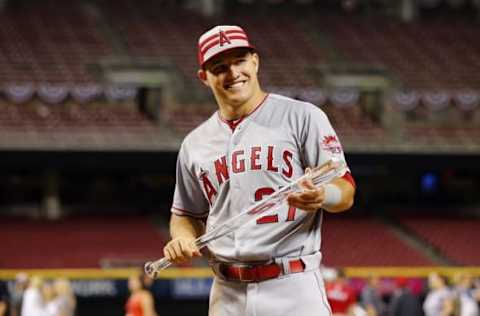
Numerous players made convincing cases for the 2016 AL MVP. These are my choices for the American League Most Valuable Player Award.
The MVP award is often the most argued about award given out in the postseason. It all centers around the word valuable. It would be much simpler if the award went to the Best Overall Player. Call it the BOA. That doesn’t have the same ring to it, though. Without explicit directions to choose the best player in the league, baseball writers come up with their own personal definition of the word valuable, which makes the process quite subjective. It allows the writers to factor in the caliber of team the player is on, with players on playoff-bound teams getting more consideration. The writers can also figure in clutch and historic performances, such as when a player sets a record or does something rarely seen before (like Miguel Cabrera’s recent Triple Crown year). Sometimes this results in the best player in the league not winning the MVP award.
As I’ve written before, I look at the MVP award as much in isolation as possible. I want to assess just the individual player. This is an individual award. For me, it doesn’t matter if his team makes the playoffs because he shouldn’t be dinged for having sub-par teammates.
Before I get to my AL MVP ballot, here are the official guidelines put out by the Baseball Writers’ Association of America (BBWAA):
Dear Voter:
There is no clear-cut definition of what Most Valuable means. It is up to the individual voter to decide who was the Most Valuable Player in each league to his team. The MVP need not come from a division winner or other playoff qualifier.
The rules of the voting remain the same as they were written on the first ballot in 1931:
- Actual value of a player to his team, that is, strength of offense and defense.
- Number of games played.
- General character, disposition, loyalty and effort.
- Former winners are eligible.
- Members of the committee may vote for more than one member of a team.
You are also urged to give serious consideration to all your selections, from 1 to 10. A 10th-place vote can influence the outcome of an election. You must fill in all 10 places on your ballot. Only regular-season performances are to be taken into consideration.
Keep in mind that all players are eligible for MVP, including pitchers and designated hitters.
Notice that it says right there in the directions to the voter that “the MVP need not come from a division winner or other playoff qualifier.” It also clearly states that “all players are eligible for the MVP, including pitchers and designated hitters.” With this in mind, I won’t dock a player for playing on a non-playoff team, being a pitcher, or being a DH.
For my ballot, I took into account a combination of Fangraphs WAR, Baseball-Reference WAR, and Win Probability Added from both Fangraphs and Baseball-Reference. I believe Wins Above Replacement (WAR) does a good job of assessing everything a player does, including hitting, fielding, and base running, although I do acknowledge that currently we can judge a player’s offense more accurately than his defense. Win Probability Added “captures the change in win expectancy from one plate appearance to the next and credits or debits the player based on how much their action increased their team’s odds of winning” (definition from Fangraphs). Using WPA evens things up a bit for closers like Zach Britton and Andrew Miller because they often come into games in the most important moments and can have a bigger impact on the outcome of the game in these high leverage situations.
This is my ballot.
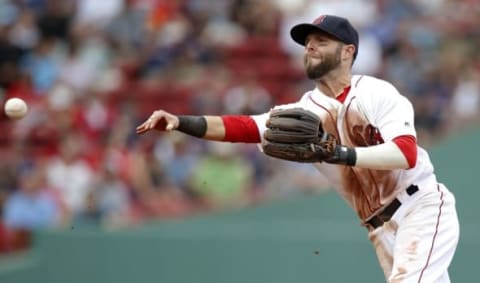
Just Missed the Cut for the Top 10
SP Corey Kluber, Cleveland Indians
5.1—Fangraphs WAR (17th in AL)
6.4—Baseball-Reference WAR (10th in AL)
1.7—Fangraphs WPA (60th in AL)
2.6—Baseball-Reference WPA (25th in AL)
215 IP, 18-9, 3.14 ERA, 3.26 FIP, 1.06 WHIP, 9.5 K/9, 2.4 BB/9, 0.9 HR/9
Corey Kluber is one of two starting pitchers among my top 15 players in the American League. He doesn’t have the gaudy win total that Rick Porcello does, but Kluber didn’t enjoy0 the league leading 6.6 runs scored per game that Porcello received.
2B Ian Kinsler, Detroit Tigers
5.8—Fangraphs WAR (11th in AL)
6.1—Baseball-Reference WAR (13th in AL)
1.7—Fangraphs WPA (59th in AL)
1.5—Baseball-Reference WPA (59th in AL)
679 PA, 117 R, 28 HR, 83 RBI, 14 SB, .288/.348/.484, 123 wRC+
The 2016 season was an impressive year for American League second basemen. Kinsler was one of four second basemen I have among my top 15 players in the American League. Kinsler hit his most home runs since 2011 and had his highest slugging percentage since 2009.
3B Kyle Seager, Seattle Mariners
5.5—Fangraphs WAR (12th in AL)
6.9—Baseball-Reference WAR (6th in AL)
2.1—Fangraphs WPA (36th in AL)
1.4—Baseball-Reference WPA (68th in AL)
676 PA, 89 R, 30 HR, 99 RBI, 3 SB, .278/.359/.499, 133 wRC+
Kyle Seager may be the least-known player among my top 15 because he plays in the northwest corner of the country with the Seattle Mariners, but he’s about as consistent as they come. He can reliably be counted on for 20-30 homers, 75-90 RBI, and good defense at third base. This was Seager’s best season based on both Fangraphs and Baseball-Reference WAR.
2B Dustin Pedroia, Boston Red Sox
5.2—Fangraphs WAR (16th in AL)
5.6—Baseball-Reference WAR (16th in AL)
3.3—Fangraphs WPA (14th in AL)
2.8—Baseball-Reference WPA (20th in AL)
698 PA, 105 R, 15 HR, 74 RBI, 7 SB, .318/.376/.449, 120 wRC+
Other than a 31-game sample in his rookie year, Pedroia was coming off the worst season of his career heading into the 2016 season. He rebounded quite nicely by putting together a year that would fit right in place with his good string of seasons from 2011 to 2013.
SS Carlos Correa, Houston Astros
4.9—Fangraphs WAR (18th in AL)
5.9—Baseball-Reference WAR (14th in AL)
3.5—Fangraphs WPA (12th in AL)
3.3—Baseball-Reference WPA (10th in AL)
660 PA, 76 R, 20 HR, 96 RBI, 13 SB, .274/.361/.451, 122 wRC+
Based on Fangraphs WAR, Carlos Correa just had the sixth-best season ever for a shortstop 21 years old or younger. Four of the five young shortstops ahead of him played before 1940. There are few players in baseball with a future as bright as Carlos Correa.
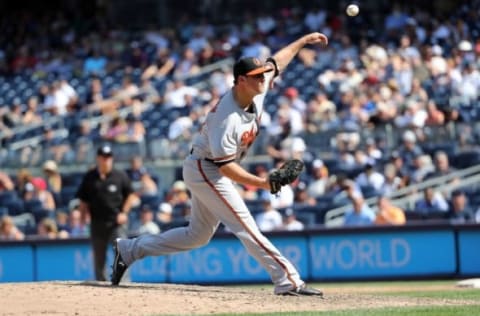
10th Place—The Dominant Reliever
RP Zach Britton, Baltimore Orioles
2.5—Fangraphs WAR (75th in AL)
4.3—Baseball-Reference WAR (31st in AL)
6.1—Fangraphs WPA (2nd in AL)
6.5—Baseball-Reference WPA (2nd in AL)
67 IP, 2-1, 47 SV, 0.54 ERA, 1.94 FIP, 0.84 WHIP, 9.9 K/9, 2.4 BB/9, 0.1 HR/9
It’s very difficult to know where to place a relief pitcher on an end-of-year ballot for the MVP or Cy Young Award. They just don’t pitch that many innings and it’s difficult to be as valuable over 67 innings as it is over 200 innings or 600 plate appearances.
Detroit Tigers’ reliever Willie Hernandez won the AL Cy Young and AL MVP Award in 1984 when he led the league in games (80) and pitched 140 1/3 innings in relief with a 1.92 ERA. Despite that impressive performance out of the pen, Hernandez was sixth among pitchers in Baseball-Reference WAR and 35th among pitchers in Fangraphs WAR. There were many players worth more Wins Above Replacement than Willie Hernandez that year, including a young shortstop named Cal Ripken, Jr., who had the seventh-best season ever for a shortstop (based on Fangraphs WAR). Hernandez did lead all American League players in one important category—Win Probability Added.
Win Probability Added is the stat that puts Zach Britton in my top 10. He’s second in WPA among all American League players. Britton had a tremendous year and is even getting some support for the AL Cy Young Award. He became the fourth pitcher ever to save 40 or more games without blowing any. He also has the lowest ERA ever for a pitcher with 30 or more saves. He gave up just one home run all year long (to Mookie Betts) in large part because he had a ground ball rate of 80 percent. That ground ball rate was by far the best in baseball for a pitcher with more than 60 innings pitched. Second was Blake Treinen, at 66 percent.
Britton has made a remarkable transformation. In the first three years of his career, mostly as a starting pitcher, Britton had a 4.77 ERA in 254 2/3 innings. He converted to the bullpen in 2014 and over the last three seasons he has a 1.38 ERA in 209 innings pitched.
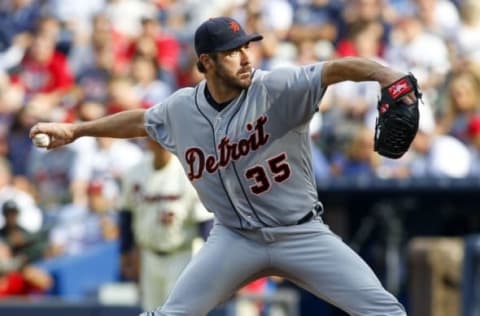
9th Place—The Lone Starting Pitcher
SP Justin Verlander, Detroit Tigers
5.2—Fangraphs WAR (14th in AL)
6.6—Baseball-Reference WAR (8th in AL)
3.5—Fangraphs WPA (13th in AL)
3.8—Baseball-Reference WPA (7th in AL)
227.7 IP, 16-9, 3.04 ERA, 3.48 FIP, 1.00 WHIP, 10.0 K/9, 2.3 BB/9, 1.2 HR/9
It will probably surprise many people that I have Justin Verlander as my top AL starting pitcher. This is likely because Verlander’s first half was not impressive. He had a 4.07 ERA and 1.13 WHIP before the All-Star break. In the second half, he put up a 1.96 ERA and 0.86 WHIP while striking out nearly 11 batters per nine innings.
Verlander only had 16 wins this year, finishing behind five players in the category. The five players with more wins than Verlander all had better run support. Rick Porcello won 22 games with 6.6 runs per game supporting him. J.A. Happ was a 20-game winner and second in the league in run support (6.1 runs per game). Corey Kluber won 18 games and finished sixth in run support, with 5.2 runs per game. David Price (5.7 runs per game) and Chris Sale (4.6 runs per game) each won 17 games and finished third and 16th in run support, respectively. Verlander was 30th in the AL with just under four runs per game supporting him.
The 2016 season was a big rebound year for Verlander, who started just 20 games in the 2015 season because of injuries. This year he had his highest strikeout rate since 2009 and his best ERA since 2012. He also saw an uptick in his fastball velocity, which was the highest it’s been in the last three seasons. Not only should he get some Cy Young and MVP award consideration, he should be near the top of any Comeback Player of the Year conversation.
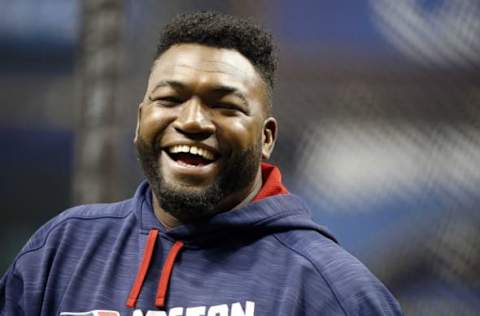
8th Place—Mr. Fountain of Youth
DH David Ortiz, Boston Red Sox
4.5—Fangraphs WAR (29th in AL)
5.1—Baseball-Reference WAR (21st in AL)
4.7—Fangraphs WPA (5th in AL)
4.2—Baseball-Reference WPA (5th in AL)
626 PA, 79 R, 38 HR, 127 RBI, 2 SB, .315/.401/.620, 163 wRC+
In what is expected to be his final season, David Ortiz just had the fourth best age-40 season ever (per Fangraphs WAR). Not playing in the field hurt his value. If you go just by offense, Ortiz’ 163 wRC+ is the best ever for a 40-year-old player. He has all the traditional numbers also, with 79 runs scored, 38 home runs, and 127 RBI, which tied for the league lead. He can also get soulful in music videos with buddy Rob Gronkowski off the field.
One of the impressive things about David Ortiz’ season, among everything else he did this year, was that he never had a bad month. He started out hot and remained scorching hot all year long. In his worst month (July), he hit .273/.347/.557, good for a 131 wRC+ (31 percent better than the average hitter when league and ballpark are taken into consideration).
An overlooked aspect of Ortiz’ late-career run has been his above average ability to make contact. In 2010, Ortiz struck out almost 24 percent of the time. Since then, his strikeout rate has been between 13 percent and 16 percent every year. He hasn’t struck out more than 100 times since 2010, which is rare for a power hitter these days. There were 36 hitters who hit 30 or more home runs in 2016. Ortiz had the fourth-best strikeout rate among this group. He’s a big guy with great power who can put the bat on the ball.
If he does retire, Ortiz will finish his career with 541 home runs, good for 17th all-time. He’ll also have 1,768 career RBI, 22nd on the all-time list. And he was very good in the postseason, with a career .295/.409/.553 batting line in 82 post-season games. His career had many great and memorable moments. It’s sad to see him go.
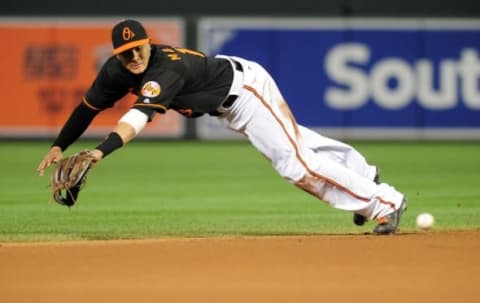
7th Place—The Young Third Sacker
3B Manny Machado, Baltimore Orioles
6.4—Fangraphs WAR (5th in AL)
6.7—Baseball-Reference WAR (7th in AL)
2.0—Fangraphs WPA (37th in AL)
1.6—Baseball-Reference WPA (54th in AL)
696 PA, 105 R, 37 HR, 96 RBI, 0 SB, .294/.343/.533, 129 wRC+
Manny Machado had a season very close to his 2015 season, when he finished fourth in AL MVP voting. The one noticeable difference was in stolen bases, where Machado went from stealing 20 bags in 2015 to stealing no bases this year. This had less to do with Machado and everything to do with the Baltimore Orioles. No team in baseball stole fewer bases than the Orioles’ 19. The next-closest team was the St. Louis Cardinals, with 35. The Orioles’ 19 steals was the 11th-fewest steals by a team since 1901. All of the teams with fewer stolen bases in a season played between 1934 and 1972.
The Orioles made up for it with a baseball best 253 home runs, 28 more than the next-best team, which was also the St. Louis Cardinals. The Orioles’ home run total this year is the fifth highest in baseball history. They were definitely extremists in those two categories.
Machado has now been worth at least 6 fWAR in three of the last four seasons and he’s only 23 years old. He’s been an incredible third baseman at a very young age (and he even played 45 games at shortstop this year when J.J. Hardy was injured). He ranks second in Fangraphs WAR among third basemen through their age 23 seasons, behind only Eddie Mathews.
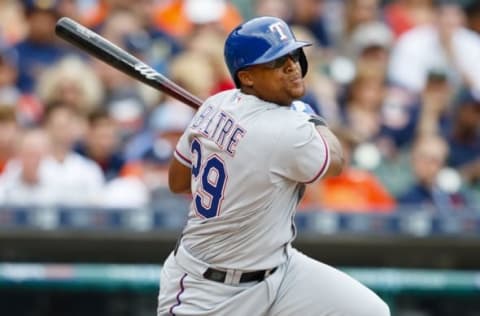
6th Place—The Old Third Sacker
3B Adrian Beltre, Texas Rangers
6.2—Fangraphs WAR (7th in AL)
6.4—Baseball-Reference WAR (11th in AL)
4.2—Fangraphs WPA (6th in AL)
4.0—Baseball-Reference WPA (6th in AL)
640 PA, 89 R, 32 HR, 104 RBI, 1 SB, .300/.358/.521, 130 wRC+
Adrian Beltre’s consistent greatness may lead him to be underappreciated. He is like a fine wine, he just gets better with age. He had a momentary down season last year, when his on-base percentage dropped below .350 for the first time in four years. It was also his second consecutive season with fewer than 20 home runs. He rebounded in a big way this year. His 32 home runs were the most he’s hit since 2012 and his 104 RBI were the third-most of his long career. He also continues to be an above average fielder at third base.
He also makes the game fun. Beltre and teammate Elvis Andrus act like annoyed big brother and annoying little brother, with Andrus constantly antagonizing Beltre. They battle over their turf on pop ups to the left side of the infield and Andrus is always trying to touch Beltre’s head, which Beltre hates. And there’s no doubt it was Andrus who orchestrated the Rangers’ reaction in this video when Beltre hit a home run in 2013.
Beltre is 58 hits away from 3,000, so he should achieve that milestone sometime next year. He’s also 55 home runs away from 500. If he reaches both marks, he’ll join an elite group of just five players with 3,000 career hits and 500 career home runs.
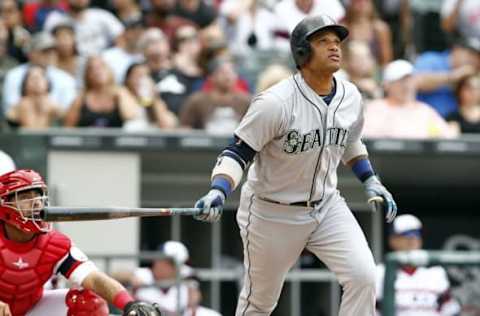
2B Robinson Cano, Seattle Mariners
6.0—Fangraphs WAR (8th in AL)
7.3—Baseball-Reference WAR (5th in AL)
3.5—Fangraphs WPA (10th in AL)
2.9—Baseball-Reference WPA (18th in AL)
715 PA, 107 R, 39 HR, 103 RBI, 0 SB, .298/.350/.533, 138 wRC+
I had a very difficult time placing Beltre and Cano. They could easily be flip-flopped on this list. The top six players on my list could be separated into a few tiers, with Cano and Beltre being on a tier together. Cano average more wins above replacement while Beltre fared better in win probability added. In the end, Cano was a bit better on offense, which I believe is more accurately measured than defense, so Beltre ends up sixth and Cano fifth on my list
At the All-Star break last year, fans of the Seattle Mariners couldn’t help but wonder if Robinson Cano’s 10-year, $240 million contract was going to hurt the team for years to come. He was hitting .251/.290/.370. His 83 wRC+ made him 17 percent below average as a hitter and he’s never been known to be a great fielder.
Then he turned it around. Cano hit .331/.387/.540 in the second half of the 2015 season and kept that hot hitting going through this season. His 39 home runs this year were the most ever for a Mariners second baseman. He also joined Bret “Biceps” Boone as the only Mariners second baseman with more than 100 RBI in a season (Boone did it three times).
Cano was particularly good over the last week of the season, when the Mariners were gunning for a playoff spot. The team famously has not been to the playoffs since 2001, but had a chance at a wild card spot right up until the second-to-last day of the season. Cano did his part to push the team right to the brink of the postseason. Over his final seven games, Cano hit .345/.424/1.069, with nine runs scored, six home runs and 11 RBI.
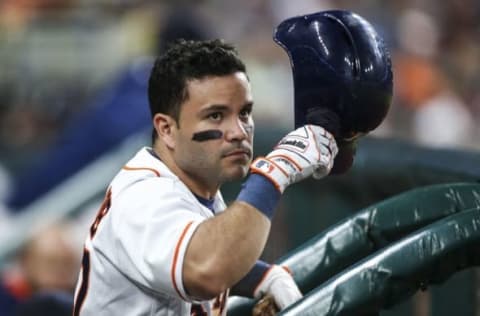
4h Place—The Little Engine That Could
2B Jose Altuve, Houston Astros
6.6—Fangraphs WAR (4th in AL)
7.7—Baseball-Reference WAR (3rd in AL)
3.1—Fangraphs WPA (16th in AL)
2.8—Baseball-Reference WPA (19th in AL)
717 PA, 108 R, 24 HR, 96 RBI, 30 SB, .338/.396/.531, 150 wRC+
Jose Altuve had a terrific year. He led the American League in batting average for the second time in three years and led the league in hits for the third year in a row. His steals did go down, from 38 last year to 30 this year, but he more than made up for it with an increase from 15 to 24 home runs. Altuve also came four RBI away from the century mark.
One blemish on Altuve’s season was a sub-par September. He finished August with a .351/.411/.567 batting line. His Batting Average on Balls In Play (BABIP) was .362. Altuve then hit just .276/.328/.371 in September, as his BABIP dropped to .286 for the month. He had his lowest monthly hard hit percentage and lowest monthly HR/FB rate in September/October. He also had an embarrassing moment when he tripped over second base on what might otherwise have been a triple.
Altuve now has three straight 200-hit seasons and over 1,000 hits in his career. He was the fastest Houston Astros player to 1,000 hits in his career. He just finished his age-26 season and is in sixth-place all-time in hits for a second baseman through the age of 26. He’s a terrific player, just not quite as good this year as the top three guys on my ballot.
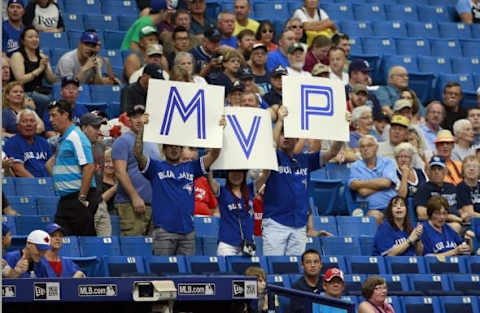
3rd Place—Last Year’s Winner
3B Josh Donaldson, Toronto Blue Jays
7.6—Fangraphs WAR (3rd in AL)
7.4—Baseball-Reference WAR (4th in AL)
4.7—Fangraphs WPA (4th in AL)
4.3—Baseball-Reference WPA (4th in AL)
700 PA, 122 R, 37 HR, 99 RBI, 7 SB, .284/.404/.549, 155 wRC+
In my view, Adrian Beltre and Robinson Cano were near equals in value this year. I feel the same about Jose Altuve and Josh Donaldson. Altuve was 4th in Fangraphs WAR and 3rd in Baseball-Reference WAR. Donaldson was 3rd in Fangraphs WAR and 4th in Baseball-Reference WAR. It came down to win probability added, where Donaldson finished higher than Altuve. I feel Donaldson did a little more to help the Blue Jays win than Altuve did for the Astros.
Statistically, Josh Donaldson was worth about one fewer win this year than last year, when he won the AL MVP Award. He still had a great year. He didn’t hit for quite as much power (37 homers this year versus 41 in 2015), but upped his on-base percentage to a career-high .404. His defense rated a bit worse than last year also, which cut into his value.
Back in July, there were whispers that Donaldson was dealing with a hamstring issue. He also jammed his thumb in June and again in August. Despite the bumps and bruises along the way, Donaldson played in 155 games and had 700 plate appearances, so the injuries didn’t keep him out of the lineup much. He did struggle at the plate in September/October, when he had a .222/.390/.389 batting line.
Over the last four years, only one player in baseball has been worth more Fangraphs WAR than Josh Donaldson, and that player is still to come on this list. Also, Donaldson is closer in value to the top guy than he is to the third-best player on the list, Paul Goldschmidt. Donaldson has been worth 30.5 WAR since 2013 and has been paid a total of just under $17 million. He may go down as the most regrettable trade Oakland GM Billy Beane ever made.
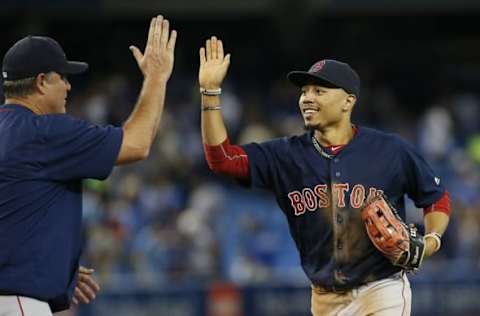
2nd Place—The Second-Best Bet
RF Mookie Betts, Boston Red Sox
7.7—Fangraphs WAR (2nd in AL)
9.6—Baseball-Reference WAR (2nd in AL)
3.5—Fangraphs WPA (9th in AL)
3.1—Baseball-Reference WPA (12th in AL)
730 PA, 122 R, 31 HR, 113 RBI, 26 SB, .318/.363/.534, 135 wRC+
I expect Mookie Betts to be the favorite of the BBWAA because he played for a team that made the postseason. He seems to be getting more buzz than the other candidates. He may get some competition from teammate David Ortiz in the voting, but it has to be acknowledged that Betts had over 100 more plate appearances than Ortiz and was an asset in the outfield and on the bases, while Ortiz was a lumbering DH. Ortiz was the better hitter, but Betts was a better player overall because he excelled in all aspects of the game, which includes being part of a Michael Jackson win celebration with his outfield teammates.
Betts made his mark atop the leaderboards. He finished second in the AL in plate appearances, second in runs scored, third in stolen bases, fourth in RBI, second in batting average, eleventh in on-base percentage, and eighth in slugging percentage. Based on Fangraphs WAR, it was the fourth-best season in history for a 23-year-old right fielder, behind only 1944 Stan Musial, 1969 Reggie Jackson, and 1932 Mel Ott.
Betts was also second in both versions of WAR, which is why I have him on a tier above Josh Donaldson and Jose Altuve. In fact, Betts is on his own tier. For me, he’s clearly better than every player listed below him on my ballot, but not at the level of the top guy.
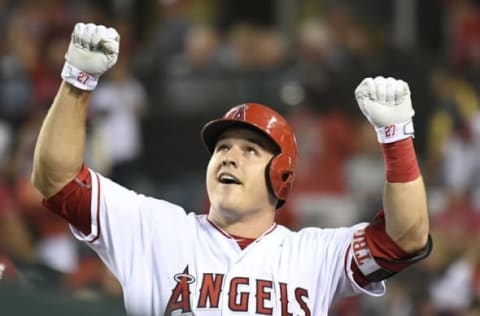
1st Place—The Best in the Business
CF Mike Trout, Los Angeles Angels
9.4—Fangraphs WAR (1st in AL)
10.6—Baseball-Reference WAR (1st in AL)
7.0—Fangraphs WPA (1st in AL)
6.5—Baseball-Reference WPA (1st in AL)
681 PA, 123 R, 29 HR, 100 RBI, 30 SB, .315/.441/.550, 171 wRC+
Mike Trout was clearly the best player in the American League this year (and in all of baseball), which means he was the most valuable player in the American League. I don’t believe a clearly superior player can magically become less valuable than another player because his team didn’t make the playoffs. This is an individual award. The directions to the voter are clear:
The MVP need not come from a division winner or other playoff qualifier.
It would not be unprecedented for a player from a non-playoff team to be the league MVP. It happened just last year when Bryce Harper won the NL MVP while playing for a non-playoff team. Albert Pujols won the NL MVP in 2008 for a fourth-place St. Louis Cardinals team. Alex Rodriguez won the 2003 AL MVP Award as a member of the last-place Texas Rangers. It would not rock the baseball world if Mike Trout were awarded his well-deserved MVP trophy. The real shame is that he could be winning his fifth MVP in a row, but is likely to finish second for the fourth time in five years.
More from Call to the Pen
- Philadelphia Phillies, ready for a stretch run, bomb St. Louis Cardinals
- Philadelphia Phillies: The 4 players on the franchise’s Mount Rushmore
- Boston Red Sox fans should be upset over Mookie Betts’ comment
- Analyzing the Boston Red Sox trade for Dave Henderson and Spike Owen
- 2023 MLB postseason likely to have a strange look without Yankees, Red Sox, Cardinals
Trout led the American League in both versions of WAR and both versions of WPA. That should be all it takes. You can’t do better than that. But wait, there’s more. His 171 wRC+ was tops in the AL, making him the best hitter in the league. Are more traditional numbers your thing? Trout led the league in runs scored and stolen bases and on-base percentage. He was fifth in batting average and fourth in slugging percentage. Of course, he “only” had 100 RBI, which made him tied for 14th in that category, but let’s take a closer look at Trout’s RBI production because it is often something the voters take into consideration.
David Ortiz and Edwin Encarnacion tied for the league lead this year with 127 RBI. Mike Trout only had 100 RBI. But let’s consider their opportunities. Mike Trout came to the plate 171 times with runners in scoring position and drove in 72 runs, which is 42 percent. David Ortiz came to the plate 185 times with runners in scoring position and drove in 77 runs, also 42 percent. Edwin Encarnacion came to the plate 198 times with runners in scoring position and drove in 80 runs, which is 40 percent.
Based on opportunities with runners in scoring position, Trout was the equal (or better) than the two players who led the league in RBI. Mike Trout’s teammate, Albert Pujols, had 208 plate appearances with runners in scoring position, thanks largely to Trout himself, and Pujols drove in 83 runs, which was nearly equal to Encarnacion’s 40 percent, but below Trout’s 42 percent. Trout hit .328/.480/.592 with runners in scoring position. His low RBI total, relative to other players in the league, was not because of his performance. It was because he didn’t have the opportunities that other players had.
Next: 5 Bold Postseason Predictions
The guy did everything you could do as a player. He checks off the listed criteria given to MVP voters, namely, actual value of a player to his team on offense and defense; number of games played; and general character, disposition, loyalty, and effort. Trout is so good that, just by signing an autograph, he can make a young fan feel overwhelmed with emotion.
To me, it’s simple. There’s just no question that Mike Trout was the best player in the American League this year and should be the MVP.
My 10-man ballot:
- Mike Trout, Los Angeles Angels
- Mookie Betts, Boston Red Sox
- Josh Donaldson, Toronto Blue Jays
- Jose Altuve, Houston Astros
- Robinson Cano, Seattle Mariners
- Adrian Beltre, Texas Rangers
- Manny Machado, Baltimore Orioles
- David Ortiz, Boston Red Sox
- Justin Verlander, Detroit Tigers
- Zach Britton, Baltimore Orioles
Just missed the cut:
- Corey Kluber, Cleveland Indians
- Kyle Seager, Seattle Mariners
- Carlos Correa, Houston Astros
- Dustin Pedroia, Boston Red Sox
- Ian Kinsler, Detroit Tigers